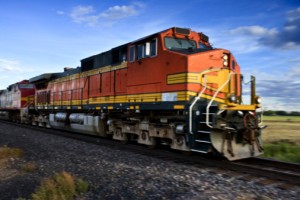 Working on the railroad can be a dangerous occupation at times, which is hardly surprising. The injury statistics of those working in this profession display how hazardous it is to be working around trains. The work may be hard, and the pay is certainly not the greatest, but somebody’s got to make sure the trains are running on time. Here is a look at injury statistics of those working on the railroad.
Working on the railroad can be a dangerous occupation at times, which is hardly surprising. The injury statistics of those working in this profession display how hazardous it is to be working around trains. The work may be hard, and the pay is certainly not the greatest, but somebody’s got to make sure the trains are running on time. Here is a look at injury statistics of those working on the railroad.
Fatalities Associated with Working on Railroads
Working on the railroad is perilous business, as these unfortunate injury statistics attest. Based on data from the Bureau of Labor Statistics from 1993 to 2002, there were 1,221 fatalities associated with working on railroads. Breaking down these statistics, it’s obvious that the majority of these deaths (62 percent) came from non-railroading fatalities. Additionally, 24 percent of these overall fatalities stemmed from people who worked in the railroading industry, and another 14 percent of these deaths were attributed to railroading workers from other industries.
There Is an Overall Downward Trend
With all this focus on fatalities and dying, it can be tempting to bury the significance of these injury statistics. However, the trend has been going down, meaning that fewer railroad workers today are dying than in the past. In 1993, the occupational deaths, per 100,000, of those working in the railroad transportation industry were almost 15. By 2002 though, that number had dropped meaningfully to 8, which is a reduction of almost 50 percent. This downward trend can be attributed to greater safety precautions being taken by the industry.
Transportation Accidents Account for Much of the Statistics
This comes as no surprise: transportation accidents involving railroads made up about 66 percent of all railroad fatalities. Transportation accidents numbered 320 overall, and specifically, railway accidents numbered 138. Of those railway accidents, railway vehicle accidents totaled 78, while non-railway vehicle collisions accounted for 31 deaths. Another 24 fatalities stemmed from falls from, on, or in railway vehicles. Some 146 pedestrian workers also met their deaths by being struck by vehicles while on the job.
Construction Worker Fatalities are Significant
They say that working construction can be hazardous to your health, and they’re right. These injury statistics are from the 1993 to 2002 period, again. The majority of railroad construction workers who died, died due to typical construction site reasons. These included dangers like being struck down by construction or civilian vehicles, falls (including drowning after falling into a body of water), and contact with objects, as in being hit on the head by heavy objects.
If you or a loved one has been injured in an accident while working on the railroad, you may be entitled to claim.
The Disparti Law Group is a railroad disability and injury law firm located in Chicago, Illinois. For more information about railroad injuries, disabilities, and unfortunate deaths, visit the website at www.chicago.dispartilaw.com


